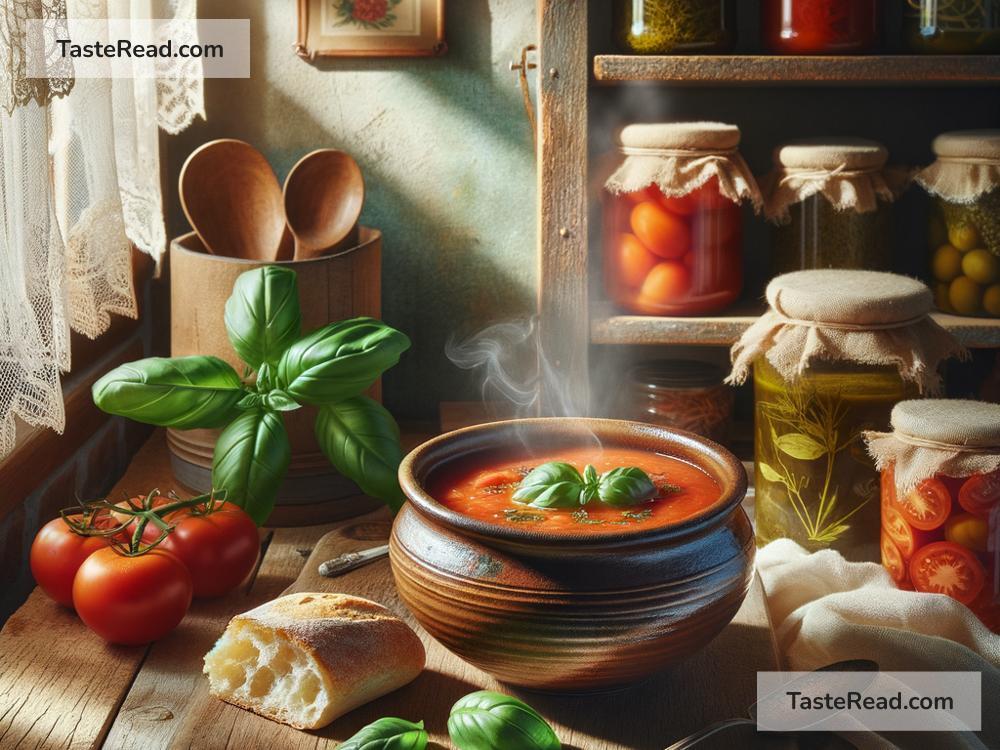Celebrating the Bold Simplicity of Rustic Tomato Soup Twists in Italian Kitchens
When it comes to Italian cuisine, simplicity is often the star of the show. From fresh pizza to handmade pasta, Italians know how to turn basic, high-quality ingredients into dishes that feel like a warm hug. One dish that embodies this philosophy perfectly is rustic tomato soup — a hearty, comforting creation found in kitchens across Italy.
But in Italy, tomato soup isn’t just a pot of simmering tomatoes. It’s an art form, infused with regional creativity, traditional techniques, and bold little twists that make it unique to each home or village. While it starts with a humble base, Italian cooks have a knack for transforming this simple dish into something extraordinary.
Why Tomato Soup is a Staple in Italian Kitchens
Tomatoes are a centerpiece of Italian cooking. From rich marinara sauces to fresh caprese salads, Italians truly embrace the fruity, tangy flavor of ripe tomatoes. During Italy’s summers, fresh, sun-ripened tomatoes dominate markets and kitchens. They’re perfect for making soups that are light yet deeply flavorful. In winter, the dish transforms with the use of canned tomatoes or preserved passata, bringing warmth to chilly evenings.
This staple has thrived because it’s versatile. Italian rustic tomato soup is a blank canvas, yet always deeply satisfying. It can be enjoyed on its own, served with bread or pasta, or customized with herbs, vegetables, or toppings that bring freshness and flair.
The Rustic Charm: Handmade and Straightforward
What makes rustic tomato soup special is its bold simplicity. Unlike overly refined dishes, rustic tomato soup feels earthy and authentic. It doesn’t require fancy equipment or complicated techniques — many recipes rely on ingredients you already have in the pantry.
At its core, the soup starts with tomatoes, garlic, onion, olive oil, and a pinch of salt. Some cooks might add a splash of vegetable broth for depth or a touch of sugar to balance the tomatoes’ natural acidity. What sets this dish apart is the love and attention put into it — whether it’s gently sautéing the garlic to create a fragrant base or hand-crushing tomatoes for a textured finish.
Even the tools are rustic. In many Italian homes, the soup is made in a big pot passed down through generations and stirred with a well-worn wooden spoon. There’s a sense of history and connection with each step of preparation. Italian kitchens embrace imperfection — they know that food doesn’t have to look overly polished to taste unforgettable.
Regional Twists That Add Flavor and Personality
Italian cuisine shines through regional diversity, and tomato soup is no exception. No two villages make it exactly the same, and every cook puts their soul into their version.
Here are a few delightful twists you might find:
-
Tuscany: Pappa al Pomodoro
Tuscany takes tomato soup to the next level with the addition of stale bread. This classic dish, known as “pappa al pomodoro,” is rich and thick, almost like a stew. Olive oil, garlic, and fresh basil elevate the flavors, while the bread adds heartiness. It’s a perfect way to use leftovers and make something truly satisfying. -
Sicily: Mediterranean Flair
In Sicily, tomatoes are paired with bold Mediterranean flavors like olives, capers, or anchovies. These ingredients add pops of saltiness and make the soup taste even livelier. Sicilian tomato soups may also include herbs like oregano, giving them a distinct island vibe. -
Northern Italy: Creamy Variations
In the colder northern regions, tomato soup is sometimes made creamy with the addition of mascarpone or ricotta cheese. These silky ingredients create a comforting texture, perfect for warming up during chilly months. -
Southern Italy: Peppers and Spice
Southern Italian kitchens often add roasted red peppers or a pinch of chili flakes to their rustic tomato soup. This version packs a little heat, contrasting nicely with the sweetness of ripe tomatoes.
How Italians Enjoy Their Rustic Tomato Soup
One reason tomato soup has stayed popular across Italy is its flexibility. Italians enjoy this dish any time of the day — lunch, dinner, or even as a snack. It’s often paired with freshly baked bread, like crusty ciabatta or slices of focaccia, which are perfect for soaking up the flavorful broth.
Some families serve it with pasta stirred in, turning it into a one-pot meal similar to “pasta e fagioli.” Others garnish their soup with shaved Parmigiano-Reggiano, fresh basil leaves, or a drizzle of extra virgin olive oil for added richness. However it’s served, the focus is always on enhancing natural flavors.
And let’s not forget those treasured moments of gathering around the dinner table with loved ones over a steaming bowl, sharing stories and laughter. For Italians, food isn’t just sustenance — it’s a celebration of life, connection, and heritage.
Bringing an Italian Tradition to Your Kitchen
The beauty of rustic tomato soup is that it’s easy to recreate at home, even if you’re far away from the cobblestone streets of Italy. You don’t need fancy skills or rare ingredients — just a love for cooking and a willingness to embrace simplicity.
Start by sourcing the best tomatoes you can find. Whether it’s fresh from the market or high-quality canned options, flavorful tomatoes form the backbone of the dish. Slow cooking is key — give the soup time to develop its full, rich flavor. Add your unique twist, whether it’s fresh herbs from your garden or a sprinkle of chili flakes.
Making rustic tomato soup is more than cooking a meal. It’s about leaning into creativity, sharing warmth, and experiencing the joy of simple, delicious food. By preparing this dish, you’ll not only nourish your body but also bring a little slice of Italy’s soul into your home.
So why not celebrate bold simplicity tonight with a pot of rustic tomato soup? Just like those Italian kitchens, your unique twist will make it yours — and just perfect.


